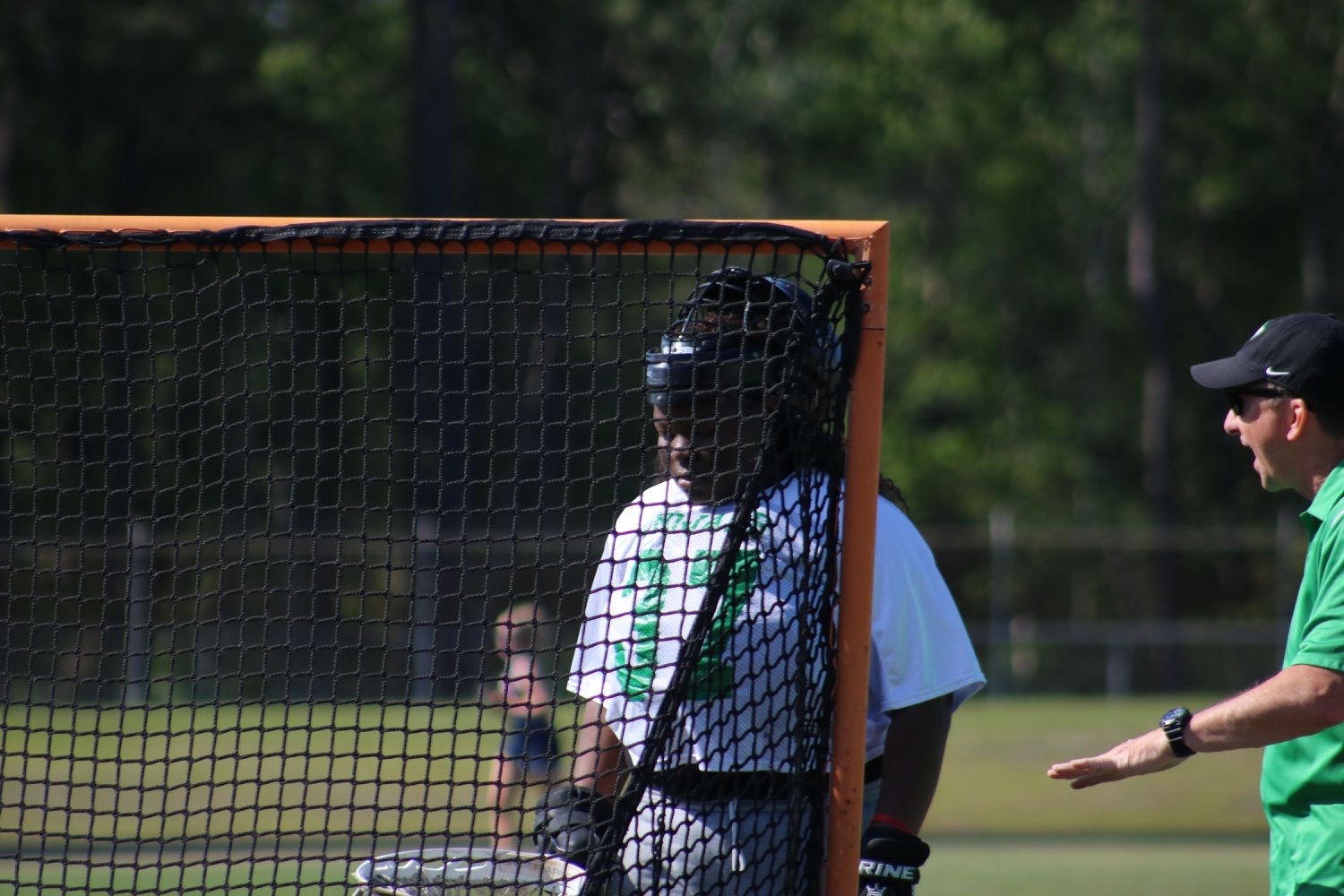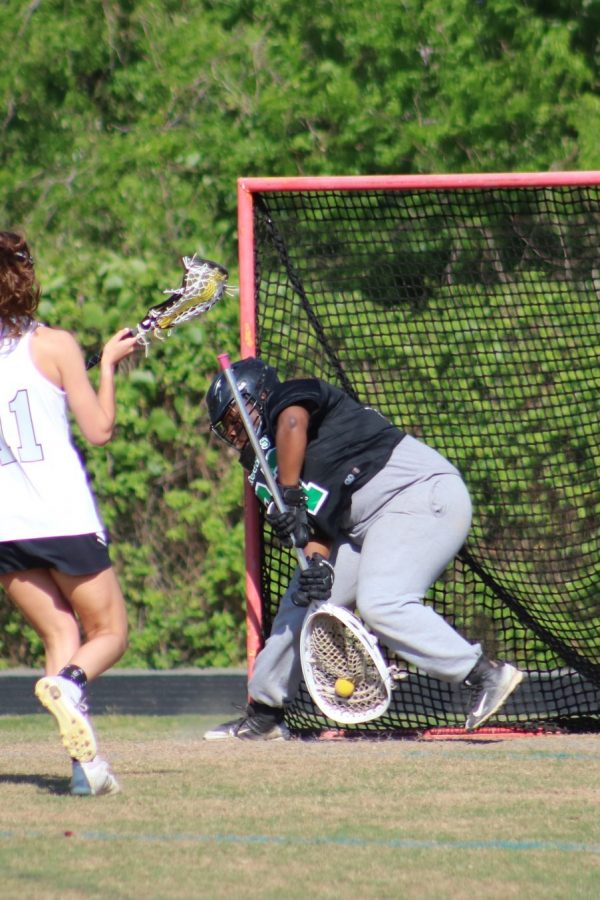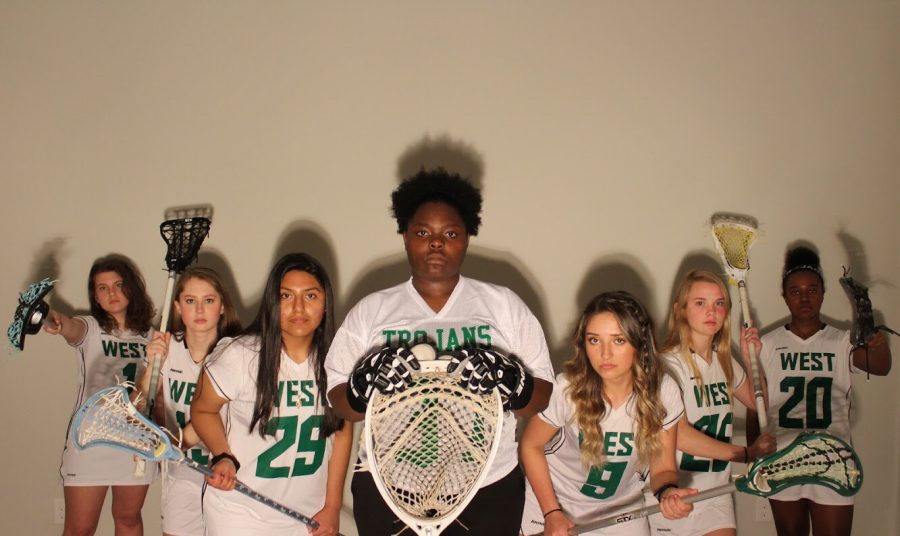Photo by Gwenna Gentle
The Women’s Lacrosse seniors stare into the camera at their media day.
From Recruit to Commit
Mar 8, 2019
Let’s talk about recruiting.
Recruiting once upon a time involved a coach coming out to see you play a game and if they liked you they would recruit you and if they didn’t they would lose interest but the recruiting game of today is much different.
My name is Molysha “Moe” Brown, I am the captain of the WBHS Lady Trojans Women Lacrosse team and I am officially committed to play Division 1 lacrosse at Delaware State University. I began playing lacrosse when I was freshman two weeks after the official tryouts, my friend Gwenna Gentle’s mom was the lacrosse coach at the time. Coach Kate Gentle entered the locker room after school to encourage Gwenna to go to soccer tryouts, she decided she wanted to play lacrosse, me and my friends, Courtney Gore and Kaliyah Matthews decided to tag along since the head varsity basketball coach encouraged us to participate in a sport in the off-season and the rest was history.

Molysha Brown stands in the goal prior to a home game against Hoggard.
Following my freshman lacrosse season I decided that I was decent enough and wanted to play at the collegiate level after I finished high school. The issue was I had no clue how to go about it. I began making multiple recruiting profiles on websites like CaptainU, NCSA, and BeRecruited. While I was able to get in contact with some coaches through the messaging boxes on the sites it wasn’t really efficient. I decided to talk to my high school coach who also coached my club team at the time about recruiting. She told me that in order to get recruited you have to make connections and attend every event possible that means sacrificing your weekends and even summer. It means dedicating time to researching colleges and universities and their best majors, visiting schools that align with your specific needs and wants, and making sure you are keeping your grades up.
The List
- Establish how much time your willing to commit to train for your sport and ultimately if you want to play at a higher level.
- Research
- Research colleges and universities that have good programs for what you want to major in. Your education comes before your athletics.
- Research colleges and universities that have your desired sports programs.
- The main differences between Division 1 (D1), Division 2 (D2) and Division 3 (D3) is funding.
- Division 1 programs tend to be your bigger schools which allows them to have more funding and often times more sports programs. These schools can give both academic and athletic scholarships. They also tend to be a larger time commitment.
- Division 2 programs are your medium size schools they tend to be more academically driven but they do have money to give. These schools can give both athletic and academic scholarships.
- Division 3 programs are smaller schools. They are definitely more academically driven than athletically due to the fact that they can only give out academic and need-based scholarships.
- The main differences between Division 1 (D1), Division 2 (D2) and Division 3 (D3) is funding.
- Cross-reference your lists and the schools on both lists are now your target schools
- Make a Recruiting Profile.
- Draft Introduction Emails/Letters
- Make contact with the admissions offices and coaches
- Attend Showcases, Prospect Days, Clinics, Camps, and/or Tournaments
- Visit Campuses and Talk to Coaches
- The NCAA has VERY specific rules when it comes to recruiting. There are dead periods based upon recruit class, age, and division. BE AWARE
- Establish strong connections.
- Commit
- Commitments can be verbal, which is nonbinding and contractual, which involves you signing the National Letter of Intent (NLI).

Molysha Brown makes the save in the second half of the Lady Trojans 2nd playoff game.
